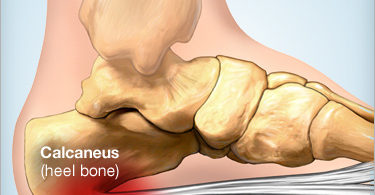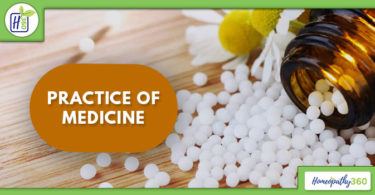Authors:
Dr. Nandini Dadhich1 and Dr. Dilip Dadhich2
- MD (PGR), Dept. of Materia Medica, Dr.M.P.K.Homoeopathic Medical College, Hospital & Research Centre, Jaipur (A constituent unit of Homoeopathy University, Jaipur, Raj. 302029) India.
- M.D.(Hom.), Professor and HOD, Dept. of Physiology & Biochemistry, Dr.M.P.K.Homoeopathic Medical College, Hospital & Research Centre, Jaipur (A constituent unit of Homoeopathy University, Jaipur, Raj. 302029) India.
ABSTRACT: Allergic rhinitis is an allergic reaction which affects nose. It is an immune reaction in which the immune system unfortunately reacts with some common allergens, for eg, dust, pet dander, pollen, even some eatable things which are not harmful in general. This reaction against the allergens is called allergy and rhinorrhea, as a result of allergy is known as allergic rhinitis. Since this allergic reaction varies from individual to individual and homoeopathy deals with the individualized symptoms so there is wide scope of homoeopathy in allergic rhinitis.
KEYWORDS: Allergen, IgE, Eosinophil, Rhinorrhea, Homoeopathic therapeutics.
INTRODUCTION: It is an IgE mediated immunological response of nasal mucosa to air borne allergens and is characterized by watery nasal discharge, nasal obstruction, sneezing and itching of nose. This may be associated with symptoms like itching in eyes, palate and pharynx. Rhinitis is commonest chronic disease in human beings. One in every six people suffers from rhinitis. Allergic rhinitis constitutes more than 50% of all allergies in India and its incidence is steadily increasing worldwide. It is more common in developed countries than in developing countries.
PRE DISPOSING FACTORS:
- Hereditary – multiple gene interactions are responsible for allergic phenotypes.
- Endocrine – pubertal, marital, menopausal conditions have potential to influence.
- Psychological – many psychological factors can cause functional disorders of nose.
- Physical – changes in humidity, temperature, pollution in air cam contribute.
- Infection – viral or bacterial infections have permeability of tissue to allergen.
- Contacts – long continuous use of nasal dropper, spray, local use of some drugs (penicillin, sulfa) may produce rhinitis.
- Irritants – fumes, pepper, tobacco, smoke, pollution.
ALLERGENS are the casual substances of allergic rhinitis. They are capable of producing IgE bodies. Pollens, molds, insects, animals, house dust, dust mite are the most common cause of allergic rhinitis. In some persons ingested food, drugs may produce symptoms.
Allergic reactions are observed in two phases –
- Intermediate which occurs within 5 – 30 minutes of exposure and leads to release of histamine which clinically manifests as sneezing, discharge, blockage or bronchospasm.
- Delayed occurs after 2-8 hours of exposure due to infiltration of eosinophil, neutrophil, basophil, monocyte, CD4+ T cell at the site of allergen deposition which are clinically manifested as swelling, congestion and thick secretion.
CLASSIFICATION:
- Seasonal allergic rhinitis – symptoms appear in or around a particular season when the pollens of particular plants to which the patient is sensitive are present in air.
- Perennial allergic rhinitis – caused by allergen that are present throughout all season including animal dander, cosmetics, molds, house dusts, etc.
CLINICAL FEATURES:
- Nasal pruritus, itching may also involve eye, palate and pharynx.
- Paroxysm of sneezing.
- Tickling sensation without sneezing may found in some patients.
- Rhinorrhea – profuse clear watery discharge, post nasal dripping may occur.
- Bilateral nasal stiffness due to venous stasis of infected turbinates and mucosal edema.
- Symptoms may vary in severity from day to day or even hour to hour.
- Associated symptoms may involve cough, wheezing, chest tightness, dyspnea, irritation in eyes, pruritus.
History must include a survey of allergens associated with home, work, habits and hobbies and medicine, etc.
COMPLICATIONS:
- Involvement of sinuses occurs when the condition progresses.
- Ocular features like edema of lids, congestion, cobblestone conjunctiva, allergic shines under the eyes.
- Serous otitis media.
- Granular pharyngitis.
- Hoarseness of voice.
- Bronchial asthma.
INVESTIGATIONS:
- CBC – eosinophils increased
- Nasal smear- increased eosinophils
- Specific IgE antibody test
- Skin test – prick of intradermal test generate a localized pruritic wheel or flare
- In vitro test for IgE antibody
- Radioallergosorbent test or enzyme like immunosorbent assay
HOMOEOPATHIC APPROACH:
ACONITUM NAPELLUS: Smell acutely sensitive. Coryza much sneezing; throbbing in nostrils. Mucous membrane dry, nose stopped up; dry or with but scanty watery coryza.
ALLIUM CEPA: Sneezing, especially when entering a warm room. Copious, watery and extremely acrid discharge. Feeling of a lump at root of nose. Hay-fever. Fluent coryza with headache, cough, and hoarseness.
ARUNDO MAURITANICA: Hay-fever begins with burning and itching of palate and conjunctiva. Annoying itching in the nostrils and roof of the mouth. Coryza; loss of smell. Sneezing, itching of nostrils.
CHINA OFFICINALIS: Coryza, sneezing, watery discharge. Violent dry sneezing. Cold sweat about nose.
DULCAMRA: Dry coryza. Complete stoppage of nose. Stuffs up when there is a cold rain. Thick, yellow mucus, bloody crusts. Profuse coryza. Wants nose kept warm, least cold air stops the nose. Coryza of the new born.
EUPHRASIA OFFICINALIS: Profuse, fluent coryza, with violent cough and abundant expectoration.
GELSEMIUM SEMPERVIRENS: Sneezing; fullness at root of nose. Dryness of nasal fossae. Swelling of turbinates. Watery, excoriating discharge. Acute coryza, with dull headache and fever.
MERCURIUS SOLUBILIS: Much sneezing in sunshine. Nostrils raw, ulcerated; nasal bones swollen. Yellow-green, fetid, pus like discharge. Coryza; acrid discharge, but too thick to run down the lip; worse, warm room. Pain and swelling of nasal bones, and caries, with greenish fetid ulceration. Copious discharge of corroding mucus. Coryza, with sneezing; sore, raw, smarting sensation; worse, damp weather.
NATRIUM MURIATICUM: Violent, fluent coryza, lasting from one to three days, then changing into stoppage of nose, making breathing difficult. Discharge thin and watery, like raw white of egg. Violent sneezing coryza. Infallibe for stopping a cold commencing with sneezing. Loss of smell and taste. Internal soreness of nose. Dryness.
SABADILLA: Spasmodic sneezing, with running nose. Coryza, with severe frontal pains and redness of eyes and lachrymation. Copious, watery, nasal discharge.
SANGUINARIA CANADENSIS: Coryza, followed by diarrhea. Chronic rhinitis; membrane dry and congested.
CONCLUSION: Early recognition and management of allergic rhinitis which include allergen avoidance and treatment through indicated homoeopathic medicine can prevent complications and thus improve patient’s quality of life.
REFERENCES:
- Dhingra P.L. Diseases of ear, nose and throat. (3rd ed.). : Elsevier; 2017.
- Bansal Mohan. Diseases of ear, nose and throat. (1st ed.). New Delhi: Jaypee Brothers Medical Publishers (P) Ltd; 2013.
- Boericke W. Boericke’s New Manual of Homoeopathic MateriaMedica with Repertory. Third revised and augmented edition based on 9th edition. Noida, India: B. Jain Publishers (P) Ltd; 2018
- Murphy Robin. Lotus Materia Medica. #3rd edition. Noida, India: B. Jain Publishers(P) Ltd; 2006





